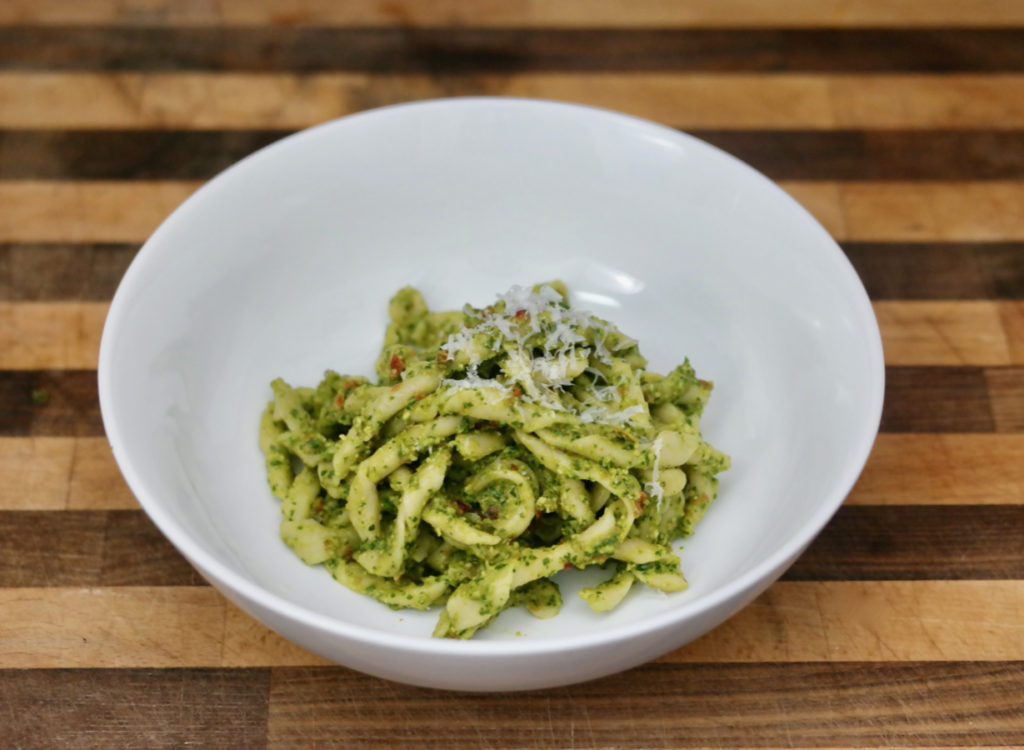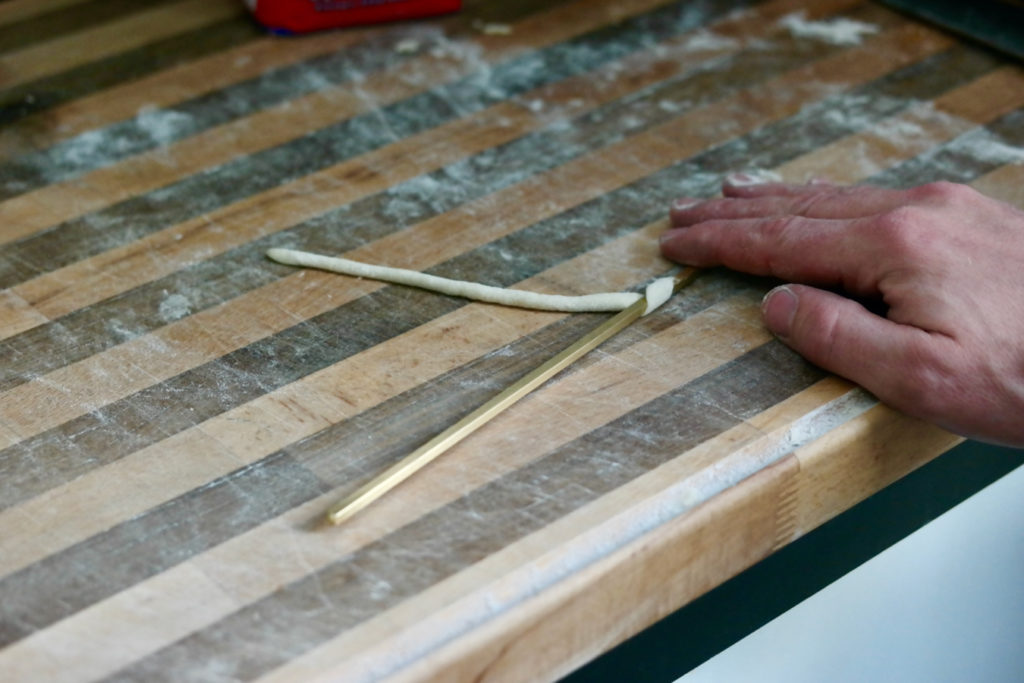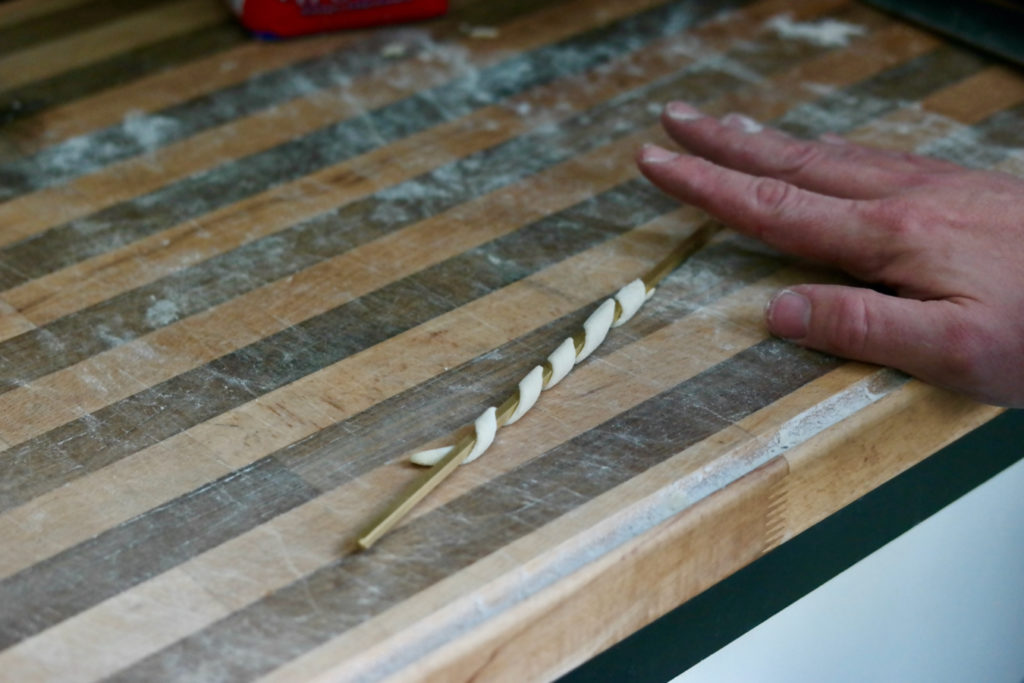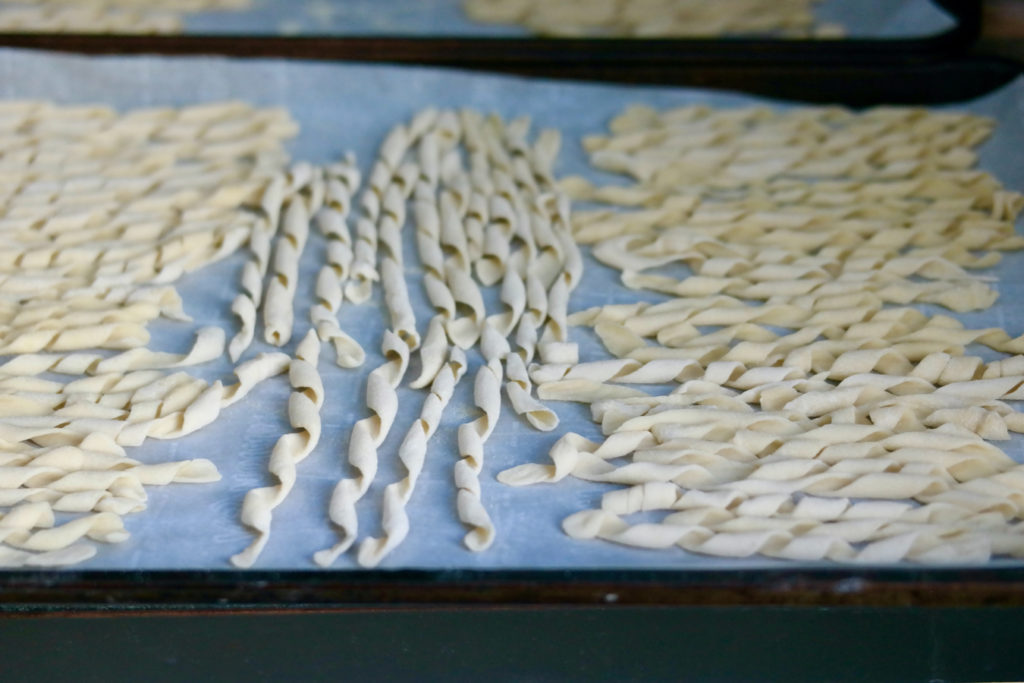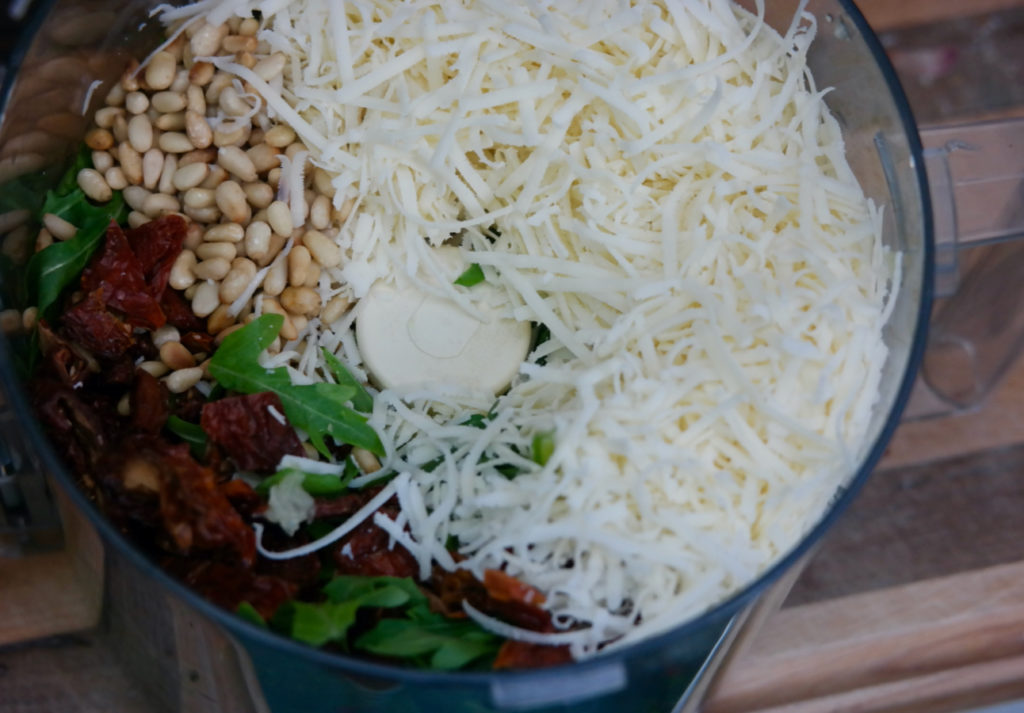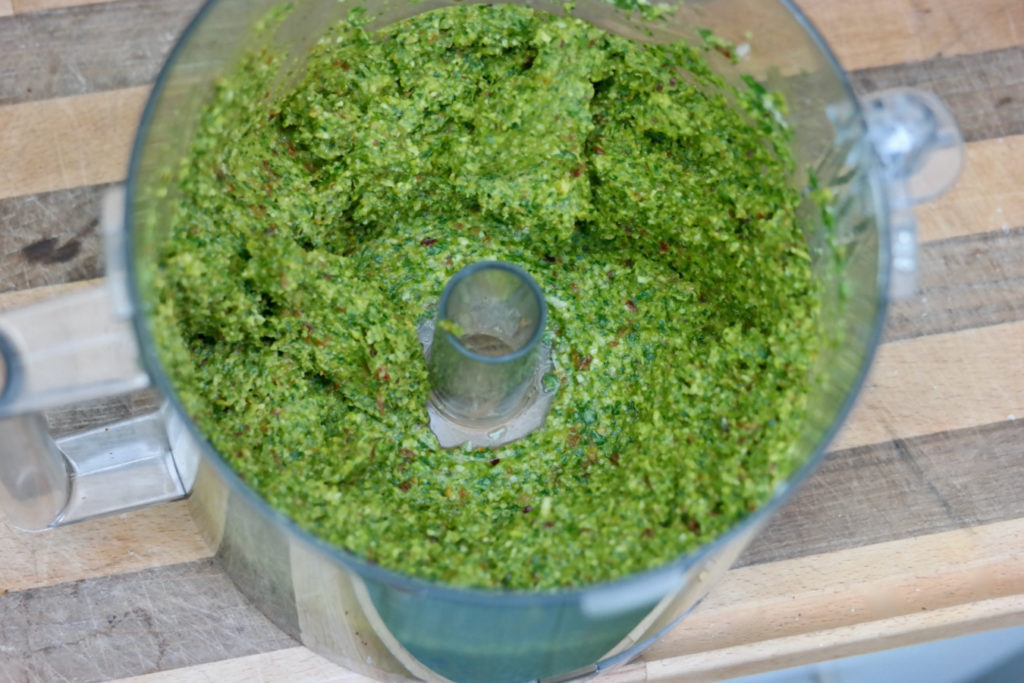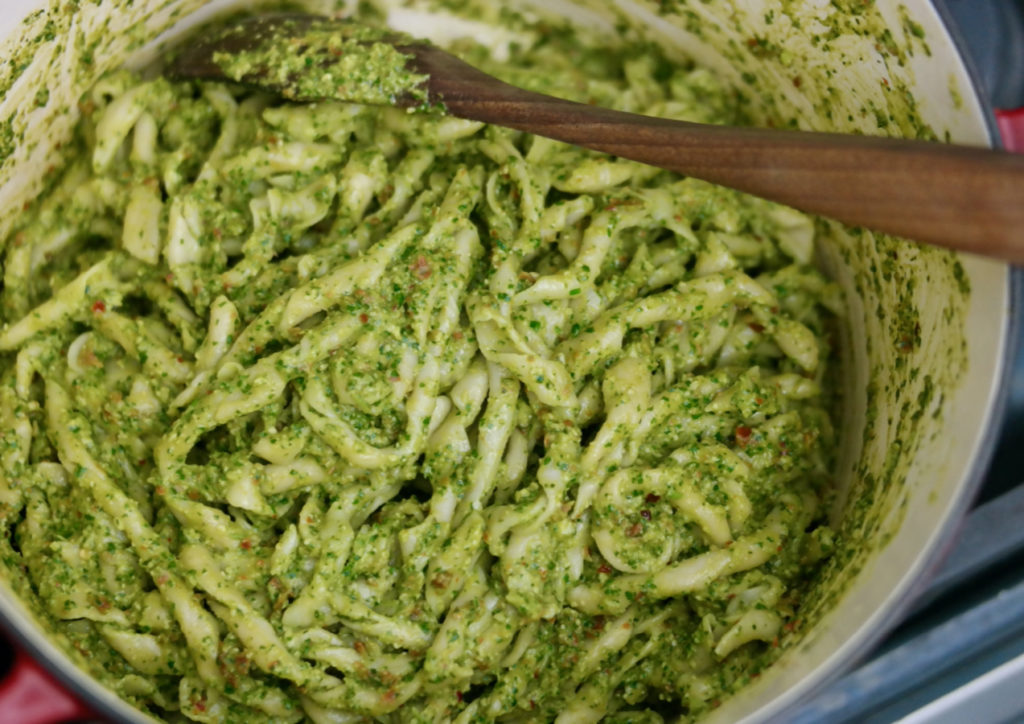Here’s our most recently pasta creation: busiate, a noodle that originates from the very south of Italy, in Sicily and Calabria. In order to make this pasta with its delightfully twirly shape, you’ll once again need to use a ferretto (like with last week’s fileja) to get all the coils right. And since busiate is typically served with a pesto sauce, that’s what we decided to go for here, although we switched it up a little bit to use some of the ingredients we had sitting around in our fridge. This pasta wasn’t quick and easy, but it came out looking very cool and it was also pretty tasty, so we’ll show you how to make your own busiate.
You’ll need:
- 00 flour
- Semolina flour
- Pine nuts
- Arugula
- Garlic
- Italian parsley
- Olive oil
- Sundried tomatoes
- Parmesan cheese
To make the pasta dough, follow the first two steps of the recipe here. When you’re ready to start shaping your busiate, cut your dough into eight equal pieces. Working with one section of dough at a time (and keeping the rest covered in plastic wrap), roll your piece of dough out into a rope by pressing your fingertips at the center of this piece and moving them outwards as you roll. Keep doing this until your rope is 1/4 inch thick all the way down, then cut it into pieces that are 3 inches long and use the same technique to roll each of these pieces out until they’re doubled in length. Now take your ferretto and place one end at an angle to the end of a piece of dough, and begin rolling the ferretto upwards, away from you, to coil the dough around the ferretto.
Continue rolling upwards until the dough is completely wrapped around the ferretto in even curls.
Roll the ferretto back and forth a few times to set the shape into the dough, then gently pull the pasta off. Place your noodles on a baking sheet lined with parchment paper that’s been dusted with semolina flour. Repeat this process until you’ve shaped all your pasta dough, then let the noodles sit out for 2 hours to dry (if you’re not going to cook them right away, you can cover the baking sheets in plastic wrap and stick them in the fridge).
When you’re ready to eat your pasta, you can make your pesto by placing 2 1/2 cups of arugula, 1/2 cup of parsley leaves, 2 garlic cloves, and a pinch of salt into a food processor. Toast 1/3 cup of pine nuts in a small pan over medium heat for 3 minutes and add those in, then shred 1/2 cup of Parmesan cheese and chop 1/4 cup of sundried tomatoes and place those into your food processor as well.
Blend everything together, then pour in 1/2 cup of olive oil and blend again until you have a thick sauce.
Cook your busiate in heavily salted boiling water for 5 minutes, then use a spider strainer to take it out of the water. Once your pot is drained, add in your pesto along with 1/2 cup of the pasta cooking water, and stir in the busiate, adding more water as needed to make for a smooth sauce.
Now you can scoop up servings of the busiate, topped with extra grated Parmesan.
To be perfectly honest, these busiate definitely took some time to make: it was over two hours before we got all our dough shaped, and even then we had some duds. But we enjoyed this cool shape, and it held the sauce really well – and speaking of which, the pesto itself was really nice because the sundried tomatoes added in a nice extra flavor that made the sauce tastier and a little more unusual. This was a good project on a weekend day when we didn’t have anything else we were doing, so if you’ve got the time and patience these busiate are pretty fun. And, of course, delicious.
